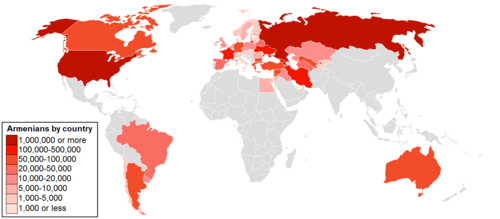| Total population | |
|---|---|
| 800-5,500 | |
| Regions with significant populations | |
| Doha | |
| Languages | |
| Armenian, Arabic | |
| Religion | |
| Armenian Apostolic Church |
Ethnic Armenians in Qatar number between 800 and 1,500 and live mainly in the capital Doha. Unofficial sources place them at around 5,500. [1]
Contents
Many Armenians originating from Lebanon, Syria and other Arab countries were attracted by the economic opportunities provided by Qatar, and they came to Qatar for jobs. Since the 1990s, economic migrants to Qatar have included people from Armenia and Armenians from Russia.

